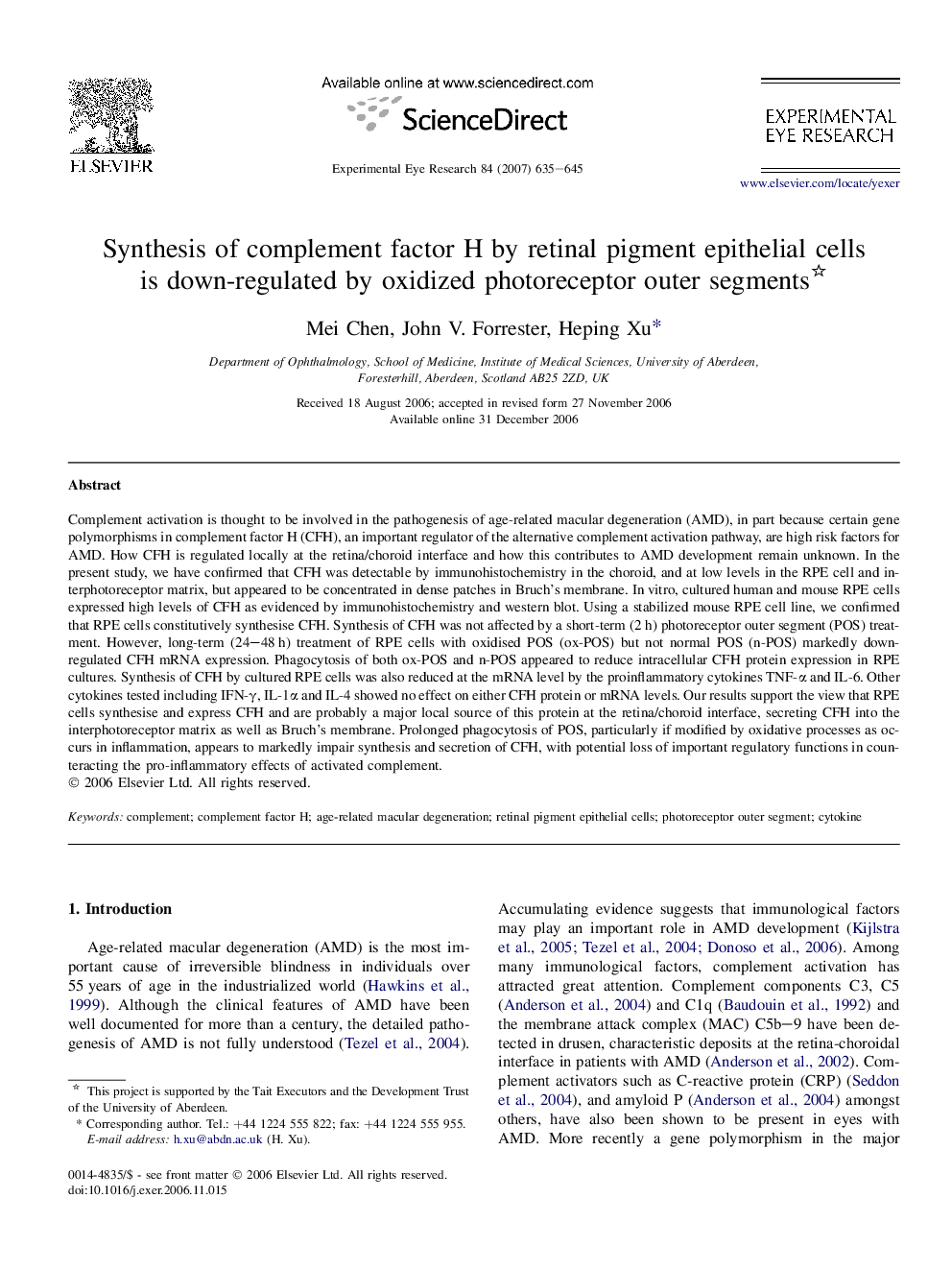| Article ID | Journal | Published Year | Pages | File Type |
|---|---|---|---|---|
| 4012345 | Experimental Eye Research | 2007 | 11 Pages |
Complement activation is thought to be involved in the pathogenesis of age-related macular degeneration (AMD), in part because certain gene polymorphisms in complement factor H (CFH), an important regulator of the alternative complement activation pathway, are high risk factors for AMD. How CFH is regulated locally at the retina/choroid interface and how this contributes to AMD development remain unknown. In the present study, we have confirmed that CFH was detectable by immunohistochemistry in the choroid, and at low levels in the RPE cell and interphotoreceptor matrix, but appeared to be concentrated in dense patches in Bruch's membrane. In vitro, cultured human and mouse RPE cells expressed high levels of CFH as evidenced by immunohistochemistry and western blot. Using a stabilized mouse RPE cell line, we confirmed that RPE cells constitutively synthesise CFH. Synthesis of CFH was not affected by a short-term (2 h) photoreceptor outer segment (POS) treatment. However, long-term (24–48 h) treatment of RPE cells with oxidised POS (ox-POS) but not normal POS (n-POS) markedly down-regulated CFH mRNA expression. Phagocytosis of both ox-POS and n-POS appeared to reduce intracellular CFH protein expression in RPE cultures. Synthesis of CFH by cultured RPE cells was also reduced at the mRNA level by the proinflammatory cytokines TNF-α and IL-6. Other cytokines tested including IFN-γ, IL-1α and IL-4 showed no effect on either CFH protein or mRNA levels. Our results support the view that RPE cells synthesise and express CFH and are probably a major local source of this protein at the retina/choroid interface, secreting CFH into the interphotoreceptor matrix as well as Bruch's membrane. Prolonged phagocytosis of POS, particularly if modified by oxidative processes as occurs in inflammation, appears to markedly impair synthesis and secretion of CFH, with potential loss of important regulatory functions in counteracting the pro-inflammatory effects of activated complement.
